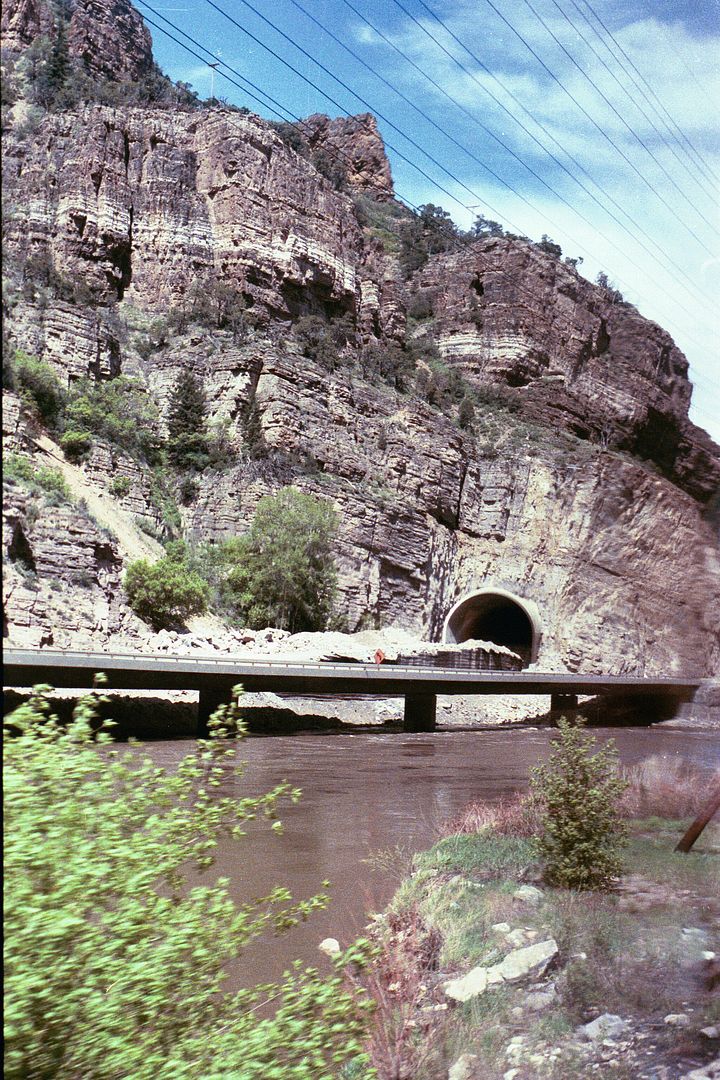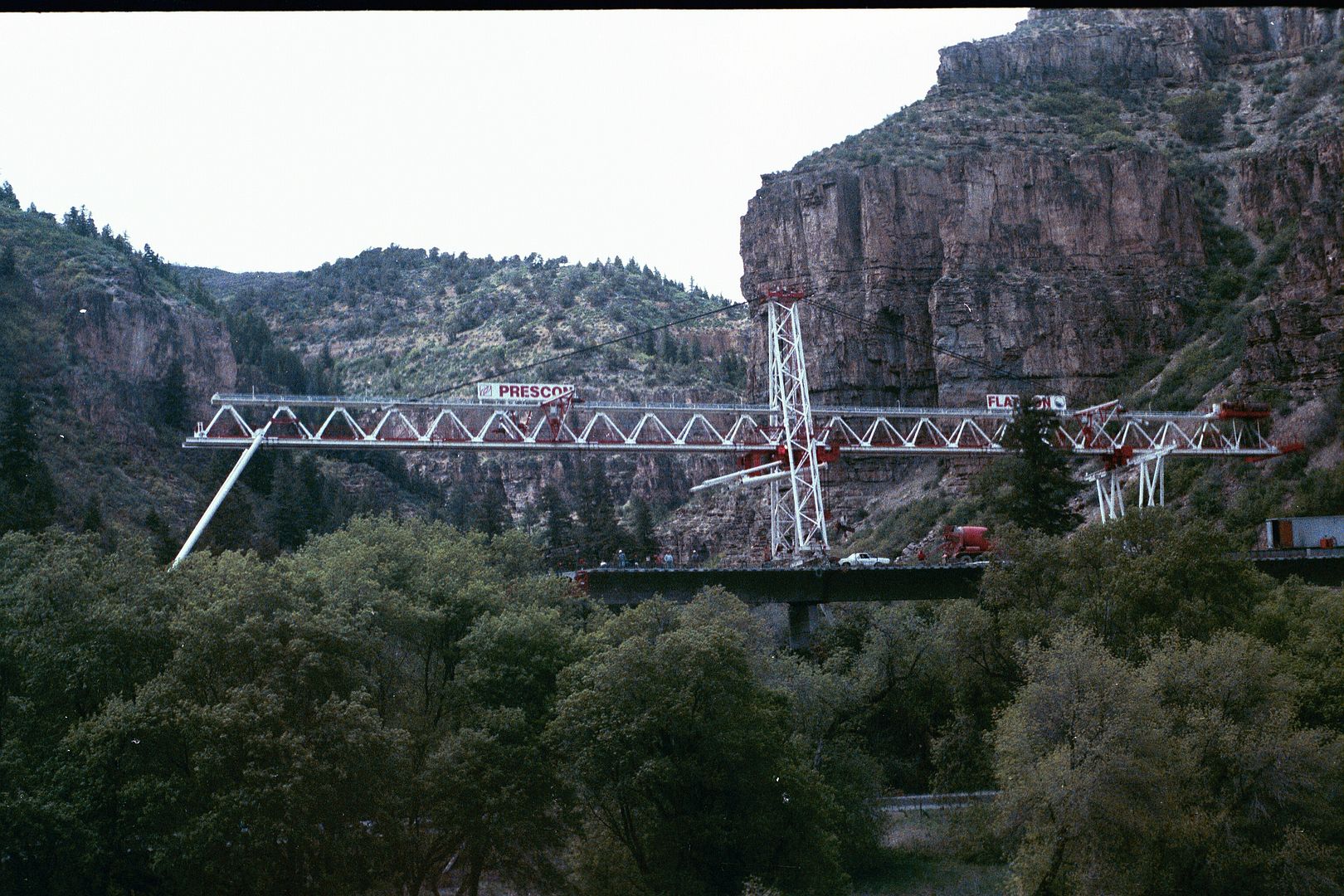KmH
Engineer
Back in the day I drove an over-the-road 18 wheeler.
For me, one of the most beautiful sections of the Interstate Highway System (IHS) was going through Glenwood Canyon. On occasion I saw trains going by on the other side of the canyon.
Back then I learned a bit about the story of how that section of I-70 became one of the per mile most expensive rural highways ever built in the USA.
When the IHS was being planned, Denver was to be the terminus of I-70. Colorado's governor at that time, Edwin C. Johnson, lobbied to have I-70 continue west from Denver.
Construction of the 12-miles of I-70 through Glenwood Canyon was delayed by several law suits filed regarding the impact building the road would have on Glenwood Canyon and it's natural beauty. The law suits delayed completion of that section of I-70 long enough that the Federal Highway Administration claims that 12-mile section of the IHS was the last of the originally planned IHS to be completed.
The highway through Glenwood Canyon was completed in 1992.
The highway is on the north side of the Colorado river.
In the 12 miles there are 40 bridges, several viaducts, several tunnels, and miles of retaining walls.
The eastbound lanes are cantilevered out over the Colorado river. The westbound lanes are on a viaduct several feet above the canyon floor.
USDOT usually prohibits bicycles along the IHS, but made provisions for them in Glenwood Canyon - likely as part of the settlement of one of the law suits.
The train tracks, back then owned by the Denver and Rio Grande Western Railroad, are on the south side of the river.
Unseen is a command center staffed with emergency response vehicles and tow trucks that are always on standby.
Cameras along the viaducts and in the tunnels are monitored by command center staff so a quick response can be made if there is an accident.
The Glenwood Canyon section of I-70 has a reduced speed limit and there are traffic signals and variable message boards (equipped with radar guns) that can be used in case of an incident.
Since becoming interested in trains I've learned:
Five miles east of the head of Glenwood Canyon at the confluence of the Colorado River and the Eagle River is where the CZ route departs I-70 for a while and heads north up into the Rockies.
There is a small town there called Dotsero.
Ferdinand Hayden did an extensive survey of southwestern and central Colorado and published the results in 1877.
Hayden used the location of the confluence of the Colorado River and the Eagle River as his "Dot Zero" (reference point) for his survey maps.
Dot Zero became Dotsero.
Dotsero was an important railroad junction back in the day, and is located at the southern end of the Dotsero Cutoff then of the Denver and Rio Grande Western Railroad. Apparently, the part of the junction that runs east from Dotsero over Tennessee Pass is dormant.
The northern end of the cutoff was named Orestod (near Bond, CO), which is Dotsero spelled backwards.
A standard gauge railroad line was built from Dotsero to Glenwood Springs in 1890.
Dotsero is at the base of Colorado's most recently active volcano. According to the US Geological Survey the volcano last erupted 4140 years ago.
Add any other CZ sight info to the thread you think may be of interest to pax traveling on the CZ.
Here is some more info - http://www.fhwa.dot.gov/publications/publicroads/04mar/04.cfm
For me, one of the most beautiful sections of the Interstate Highway System (IHS) was going through Glenwood Canyon. On occasion I saw trains going by on the other side of the canyon.
Back then I learned a bit about the story of how that section of I-70 became one of the per mile most expensive rural highways ever built in the USA.
When the IHS was being planned, Denver was to be the terminus of I-70. Colorado's governor at that time, Edwin C. Johnson, lobbied to have I-70 continue west from Denver.
Construction of the 12-miles of I-70 through Glenwood Canyon was delayed by several law suits filed regarding the impact building the road would have on Glenwood Canyon and it's natural beauty. The law suits delayed completion of that section of I-70 long enough that the Federal Highway Administration claims that 12-mile section of the IHS was the last of the originally planned IHS to be completed.
The highway through Glenwood Canyon was completed in 1992.
The highway is on the north side of the Colorado river.
In the 12 miles there are 40 bridges, several viaducts, several tunnels, and miles of retaining walls.
The eastbound lanes are cantilevered out over the Colorado river. The westbound lanes are on a viaduct several feet above the canyon floor.
USDOT usually prohibits bicycles along the IHS, but made provisions for them in Glenwood Canyon - likely as part of the settlement of one of the law suits.
The train tracks, back then owned by the Denver and Rio Grande Western Railroad, are on the south side of the river.
Unseen is a command center staffed with emergency response vehicles and tow trucks that are always on standby.
Cameras along the viaducts and in the tunnels are monitored by command center staff so a quick response can be made if there is an accident.
The Glenwood Canyon section of I-70 has a reduced speed limit and there are traffic signals and variable message boards (equipped with radar guns) that can be used in case of an incident.
Since becoming interested in trains I've learned:
Five miles east of the head of Glenwood Canyon at the confluence of the Colorado River and the Eagle River is where the CZ route departs I-70 for a while and heads north up into the Rockies.
There is a small town there called Dotsero.
Ferdinand Hayden did an extensive survey of southwestern and central Colorado and published the results in 1877.
Hayden used the location of the confluence of the Colorado River and the Eagle River as his "Dot Zero" (reference point) for his survey maps.
Dot Zero became Dotsero.
Dotsero was an important railroad junction back in the day, and is located at the southern end of the Dotsero Cutoff then of the Denver and Rio Grande Western Railroad. Apparently, the part of the junction that runs east from Dotsero over Tennessee Pass is dormant.
The northern end of the cutoff was named Orestod (near Bond, CO), which is Dotsero spelled backwards.
A standard gauge railroad line was built from Dotsero to Glenwood Springs in 1890.
Dotsero is at the base of Colorado's most recently active volcano. According to the US Geological Survey the volcano last erupted 4140 years ago.
Add any other CZ sight info to the thread you think may be of interest to pax traveling on the CZ.
Here is some more info - http://www.fhwa.dot.gov/publications/publicroads/04mar/04.cfm
Last edited by a moderator:







